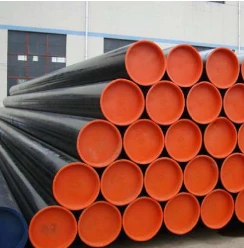-
Cangzhou Yulong Steel Co., Ltd.
-
Phone:
+86 13303177267 -
Email:
admin@ylsteelfittings.com
- English
- Arabic
- Italian
- Spanish
- Portuguese
- German
- kazakh
- Persian
- Greek
- French
- Russian
- Polish
- Thai
- Indonesian
- Vietnamese
- Zulu
- Korean
- Uzbek
- Hindi
- Serbian
- Malay
- Ukrainian
- Gujarati
- Haitian Creole
- hausa
- hawaiian
- Hebrew
- Miao
- Hungarian
- Icelandic
- igbo
- irish
- Japanese
- Javanese
- Kannada
- Khmer
- Rwandese
- Afrikaans
- Albanian
- Amharic
- Armenian
- Azerbaijani
- Basque
- Belarusian
- Bengali
- Bosnian
- Bulgarian
- Catalan
- Cebuano
- China
- China (Taiwan)
- Corsican
- Croatian
- Czech
- Danish
- Esperanto
- Estonian
- Finnish
- Frisian
- Galician
- Georgian
- Kurdish
- Kyrgyz
- Lao
- Latin
- Latvian
- Lithuanian
- Luxembourgish
- Macedonian
- Malgashi
- Malayalam
- Maltese
- Maori
- Marathi
- Mongolian
- Myanmar
- Nepali
- Norwegian
- Norwegian
- Occitan
- Pashto
- Dutch
- Punjabi
- Romanian
- Samoan
- Scottish Gaelic
- Sesotho
- Shona
- Sindhi
- Sinhala
- Slovak
- Slovenian
- Somali
- Sundanese
- Swahili
- Swedish
- Tagalog
- Tajik
- Tamil
- Tatar
- Telugu
- Turkish
- Turkmen
- Urdu
- Uighur
- Welsh
- Bantu
- Yiddish
- Yoruba

Nov . 07, 2024 23:31 Back to list
Characteristics and Applications of 316L Stainless Steel Pipe in Various Industries
Understanding 316L Stainless Steel Pipe A Comprehensive Overview
316L stainless steel pipe is a specialized type of piping that is renowned for its exceptional corrosion resistance and high strength. It belongs to the austenitic family of stainless steels, making it a popular choice for various industrial applications, especially in environments where exposure to corrosive materials is frequent. This article delves into the properties, applications, manufacturing process, and advantages of 316L stainless steel pipes.
Composition and Properties
The 316 in 316L stainless steel refers to its chemical composition. It primarily contains iron, along with significant proportions of chromium (16-18%) and nickel (10-14%). Notably, it also includes molybdenum (2-3%), which enhances its resistance to pitting and crevice corrosion in chloride environments. The L designates the low carbon content (0.03% max), which helps prevent carbide precipitation during welding, thus maintaining the pipe's integrity.
The unique combination of these elements results in a material with remarkable mechanical properties. These pipes have a high tensile strength, excellent yield strength, and outstanding ductility. They also operate effectively at elevated temperatures and have improved resistance to oxidation, making them suitable for a wide range of industries.
Manufacturing Process
The production of 316L stainless steel pipes involves several critical steps, including melting, forming, and finishing. The raw materials are first melted in high-temperature furnaces. Once the molten steel is ready, it is cast into billets, which are then heated and extruded into tubular shapes. The pipes are typically manufactured using either seamless or welded methods.
- Seamless Pipe This type involves a single piece of stainless steel that is formed into a pipe without any seams. Seamless pipes offer higher strength and better pressure ratings, which makes them ideal for critical applications.
- Welded Pipe This involves rolling flat sheets of stainless steel into a cylindrical shape and welding the edges together. While they may not have the same strength as seamless pipes, they are generally more economical and suitable for lower-pressure applications.
After the pipes are formed, they undergo various finishing processes, including pickling, passivation, and surface polishing, to enhance their surface quality and corrosion resistance.
Applications
316L stainless steel pipes are widely used across various industries due to their robust characteristics. Some common applications include
- Chemical Processing Their resistance to aggressive chemicals makes them ideal for transporting various fluids in chemical plants
.316l stainless steel pipe

- Marine Applications Given their superior resistance to saltwater corrosion, 316L pipes are commonly used in shipbuilding, offshore platforms, and marine equipment.
- Food and Beverage Industry The non-reactive nature of 316L makes it suitable for food processing and handling, ensuring the integrity of products.
- Pharmaceuticals The high cleanliness standards required in the pharmaceutical industry make 316L an excellent choice for piping systems.
- Oil and Gas Used for pipelines and fittings in oil and gas exploration, 316L's strength and corrosion resistance are invaluable in these critical applications.
Advantages of 316L Stainless Steel Pipe
The use of 316L stainless steel pipes offers numerous advantages
1. Corrosion Resistance The high levels of chromium, nickel, and molybdenum provide excellent resistance against corrosion, especially in harsh environments.
2. Durability 316L pipes are known for their longevity, making them a cost-effective option over time because of reduced maintenance and replacement costs.
3. Fabricability The material is easy to work with, allowing for various machining processes and fabrication techniques to create customized solutions.
4. Hygienic Properties The smooth surface finish helps prevent bacterial growth and facilitates easier cleaning, which is crucial in industries like food processing and pharmaceuticals.
5. High-Temperature Performance 316L can withstand elevated temperatures without degrading, making it a reliable choice for high-temperature applications.
In conclusion, 316L stainless steel pipe is an indispensable material in many industries due to its remarkable properties and versatility. Its ability to withstand corrosive environments, coupled with its strength and durability, makes it an optimal choice for projects demanding reliability and performance. As industries continue to evolve, the demand for such specialized materials will only increase, solidifying the role of 316L stainless steel pipes in modern engineering and manufacturing.
Latest news
-
ANSI 150P SS304 SO FLANGE
NewsFeb.14,2025
-
ASTM A333GR6 STEEL PIPE
NewsJan.20,2025
-
ANSI B16.5 WELDING NECK FLANGE
NewsJan.15,2026
-
ANSI B16.5 SLIP-ON FLANGE
NewsApr.19,2024
-
SABS 1123 FLANGE
NewsJan.15,2025
-
DIN86044 PLATE FLANGE
NewsApr.19,2024
-
DIN2527 BLIND FLANGE
NewsApr.12,2024
-
JIS B2311 Butt-Welding Fittings LR/SR 45°/90° /180°Seamless/Weld
NewsApr.23,2024











